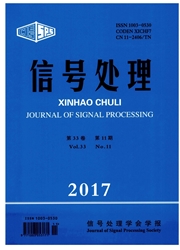

 中文摘要:
中文摘要:
为满足第五代移动通信系统高频谱效率和高能量效率的需求,提出一种工作在不同频段下行两层异构网中的高能量效率资源分配方法,考虑用户数据率需求和基站最大发射功率。天线和传输带宽是影响系统能量效率的关键因素。通过研究宏基站和小基站的天线资源和带宽分配发现:当系统天线数很大时,发射功耗的影响可以忽略不计;给定带宽分配因子时,达到宏基站或微基站最大发射功率的天线分配因子几乎可以达到最高能效;给定天线分配因子时,系统平均总功耗是关于带宽分配因子的下凸函数,存在全局最优带宽分配因子使能效最高。仿真结果表明,与给定带宽和天线资源的异构网和小小区网络相比,所提出的异构网可以显著提高系统能量效率,而且在大量用户、高数据率需求时能效提升更明显。
 英文摘要:
英文摘要:
To satisfy the requirements of fifth generation wireless communication in spectral efficiency (SE) and energy ef- ficiency (EE) , an energy efficient resource allocation approach for two-tiers downlink heterogeneous network operating in orthogonal frequencies is proposed, where data rate requirement per user and maximum transmit power per base station (BS) are considered. Antennas and transmission bandwidth are key factors affecting EE. By studying the antenna alloca- tion and bandwidth allocation between massive multi-input multi-output (MIMO) BS and small BSs, the following conclu- sions can be drawn. For large number of antennas, transmit power can be ignored ; when the ratio of bandwidth of the two tiers is given, the ratio of number of antennas of the two tiers using the maximum transmit power of massive MIMO BS or small BS can almost achieve the highest EE; when the ratio of number of antennas is given, the average total power con- sumption of the systems is convex in the ratio of bandwidth hence there is a global optimal ratio maximizing EE. Numeral results show that compared with the EE of heterogeneous network (HetNet) and small cell network without energy efficient resource allocation, the HetNet with the proposed resource allocation can achieve higher EE and the EE gain is significant for large number of users with high data rate requirement.
 同期刊论文项目
同期刊论文项目
 同项目期刊论文
同项目期刊论文
 期刊信息
期刊信息
